Posts Tagged: lygus
Celebrating the Crab Spider in Arachtober
It's Arachtober and that means celebrating arachnids for the entire month of October. Well,...
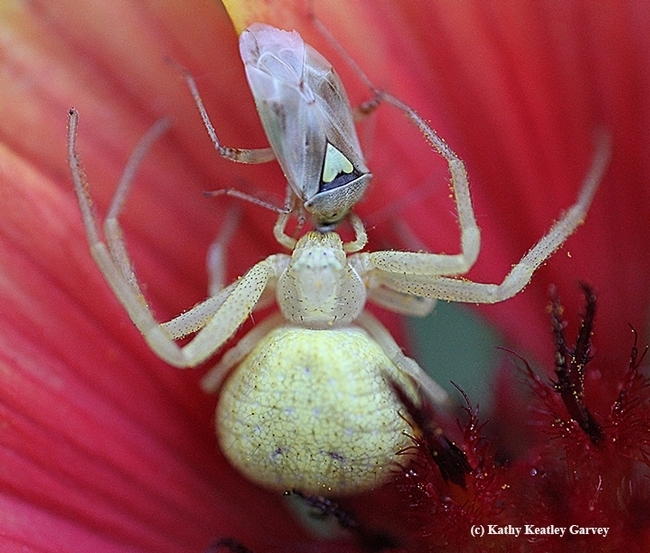
A crab spider eating a lygus bug, an agricultural pest in a Vacaville garden. (Photo by Kathy Keatley Garvey)
The Bee and the Lygus Bug
Ever seen a beneficial insect and a pest sharing the same blossom? At a recent visit to the UC...
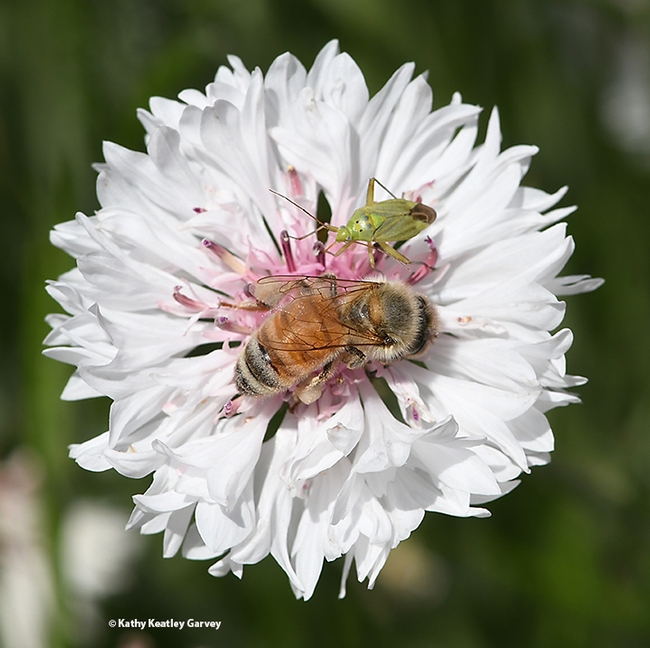
A honey bee and a lygus bug sharing a batchelor button in the UC Davis Ecological Garden. (Photo by Kathy Keatley Garvey)
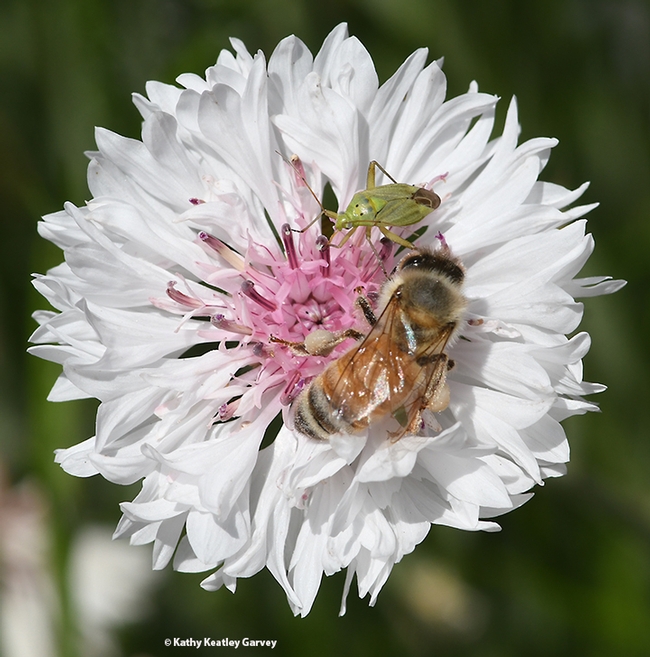
The honey bee edges closer to the lygus bug. (Photo by Kathy Keatley Garvey)
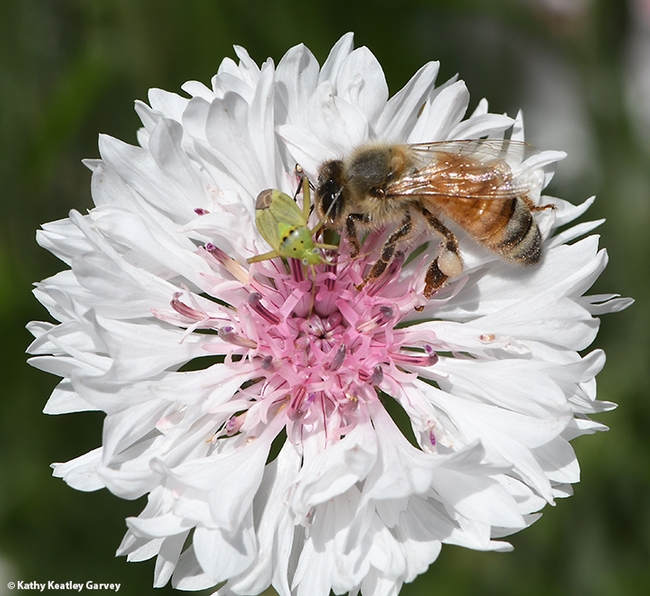
The insects meet, the honey bee, the beneficial insect, and the lygus bug, the pest. (Photo by Kathy Keatley Garvey)
Emily Bick's AAUW Grant: Targeting the Lygus Bug
Watch out, lygus bugs! Agricultural entomologist Emily Bick is targeting you. Lygus hesperus, a...
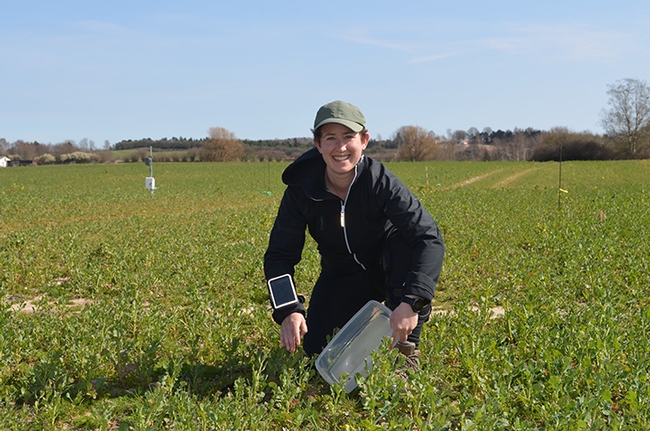
Agricultural entomologist Emily Bick doing field work in Denmark before the lockdown due to the coronavirus pandemic precautions..

Emily Bick (right) in an engagement photo with her fiance, Nora Forbes. Bick is an agricultural entomologist and a postdoctoral fellow in the lab of Lene Sigsgaard at the University of Copenhagan and Forbes is a statistician at the Danish Medtronic office.
A Big Cheer for a Crab Spider
What happened in our pollinator garden on June 3 probably would have promoted a standing ovation...
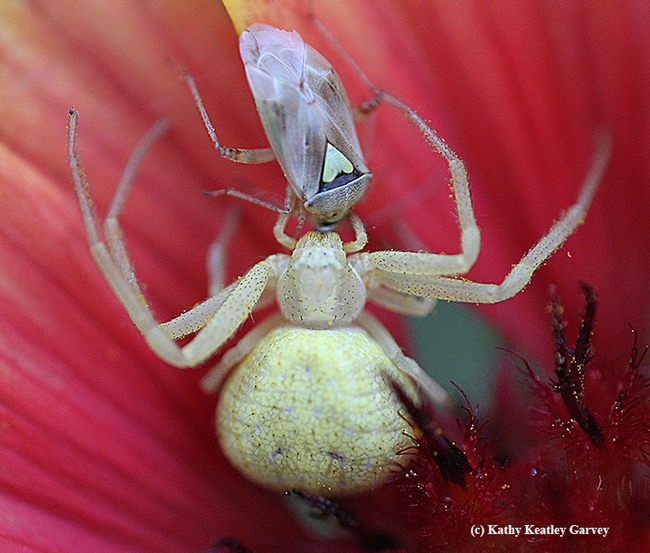
A crab spider nails an agricultural pest, a lygus bug. (Photo by Kathy Keatley Garvey)
Geospatial pioneer at Kearney Kris Lynn-Patterson retired in June
When the University of California decided to provide geospatial support to its scientists at the UC Kearney Agricultural Research and Extension Center in 2000, they tapped Kris Lynn-Patterson, an experienced teacher and information systems technologist, to lay the groundwork. Geographic information systems academic coordinator Lynn-Patterson retired in June.
Lynn-Patterson earned bachelor’s and master’s degrees in geography/climatology at Fresno State University and taught weather, climate landforms and global information systems classes there as a full-time lecturer for five years and part-time at State Center Community College for 10 years.
In 1990, while still teaching part time, she took a new position as a climatologist with a crop insurance firm.
“We were embarking on a brand-new initiative in the crop insurance business using remote sensing and spatial imagery to appraise losses from weather events,” Lynn-Patterson said.
In 2000, she again broke ground by introducing geospatial technologies to agricultural research at Kearney. Geospatial technologies now allow scientists to take a broader view of landscapes than is possible from the field level.
For example, Lynn-Patterson worked with Pete Goodell, UC Cooperative Extension advisor with the Statewide Integrated Pest Management Program, to understand the migration of lygus bugs through the San Joaquin Valley’s mosaic of diverse crops. In the spring, lygus can reproduce in lush vegetation on foothills surrounding the San Joaquin Valley. As the plants dry when the weather warms and rain stops, the lygus begin looking for a new home in valley agriculture, including cotton, which suffers severe economic losses from lygus.
By combining observations made on the ground with GIS mapping technology, Goodell was able to determine the areas in the San Joaquin Valley where cotton is most likely to have lygus problems in mid-summer. Where alfalfa is scarce, cotton fields absorb the migrating bugs. But where alfalfa is close to cotton fields, the alfalfa acts as a lygus sponge and spares cotton most of the damage.
Recently, Lynn-Patterson and her staff, in collaboration with the Citrus Pest and Disease Prevention Program, have been engaged in mapping cropping patterns in the Central Valley citrus belt. This geographic database will provide information needed to ensure quick action when Asian citrus psyllids or huanglongbing disease is found.
Last year, the Kearney GIS program became part of a larger UC Agriculture and Natural Resources statewide program called Informatics and Geographic Information Systems. IGIS is organizing and preparing data pertaining to agriculture and natural ecosystems statewide and making the information accessible on the web.
Lynn-Patterson has a full retirement planned. She is establishing a non-profit animal rescue organization, “Four Feet Inn,” that will connect homeless dogs, horses and other animals with foster families.
“My goal is to find a path to get animals off the street and into no-kill shelters,” Lynn-Patterson said. “I love animals and I love people who want to help animals, so facilitating this connection is what my spirit wants to do.”
Lynn-Patterson is also pursuing a writing career. She has already completed the first novel in a trilogy and begun work on the second. Both of these hobbies she plans to combine via the Internet with travels around the United States and Canada in a motor home.

Kris Lynn-Patterson